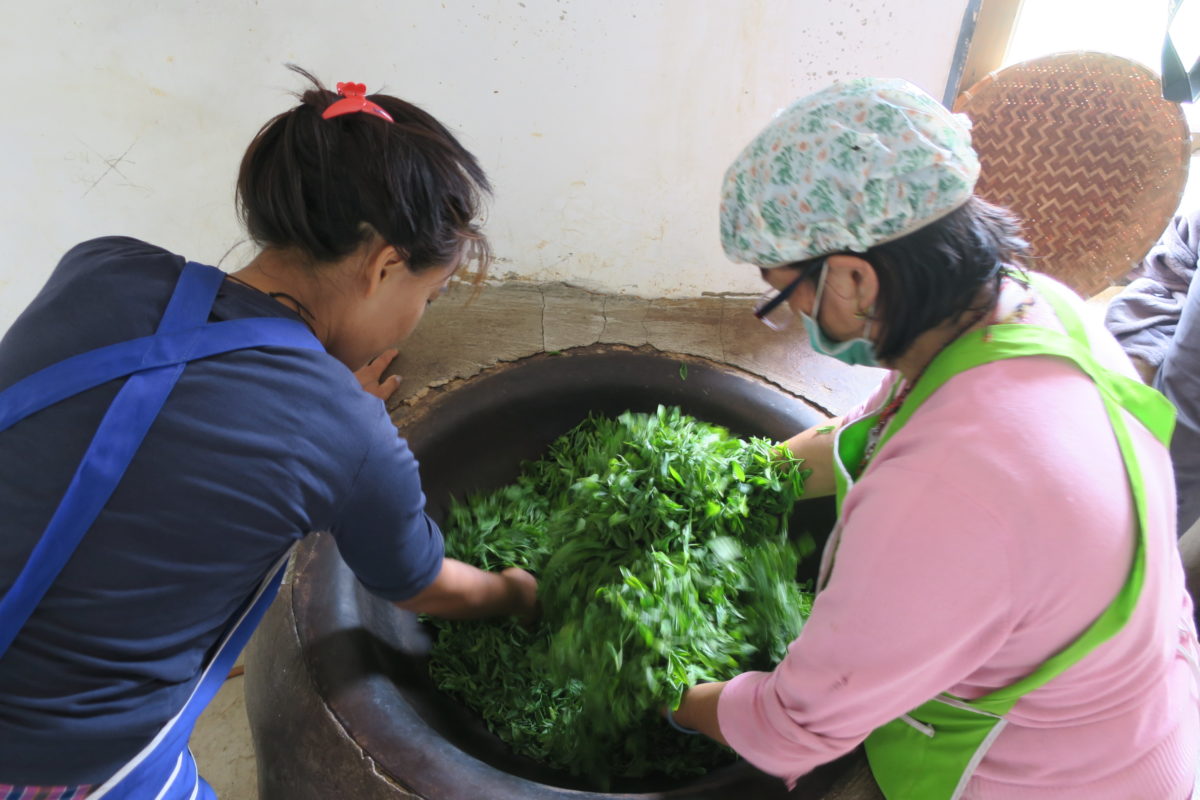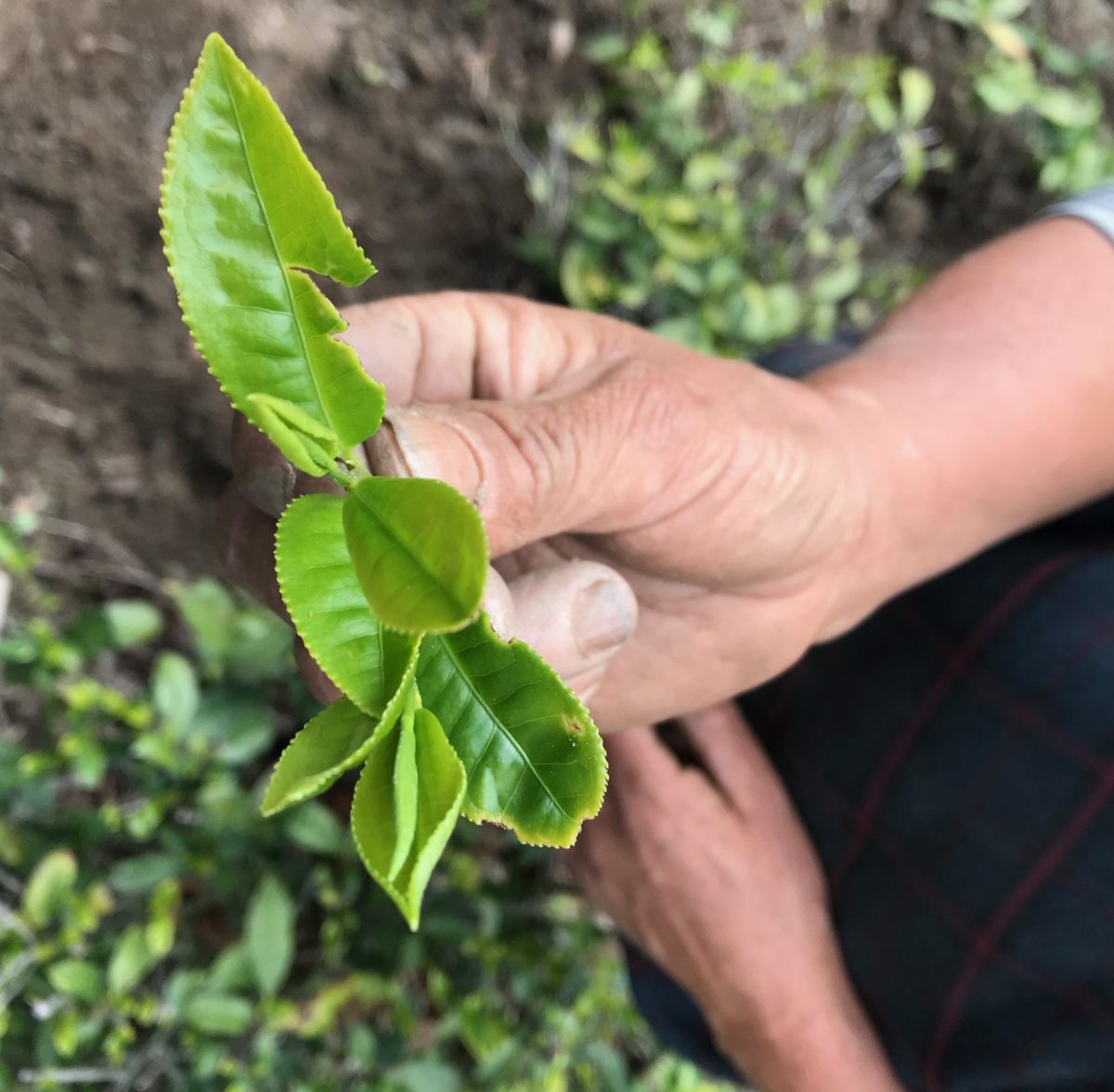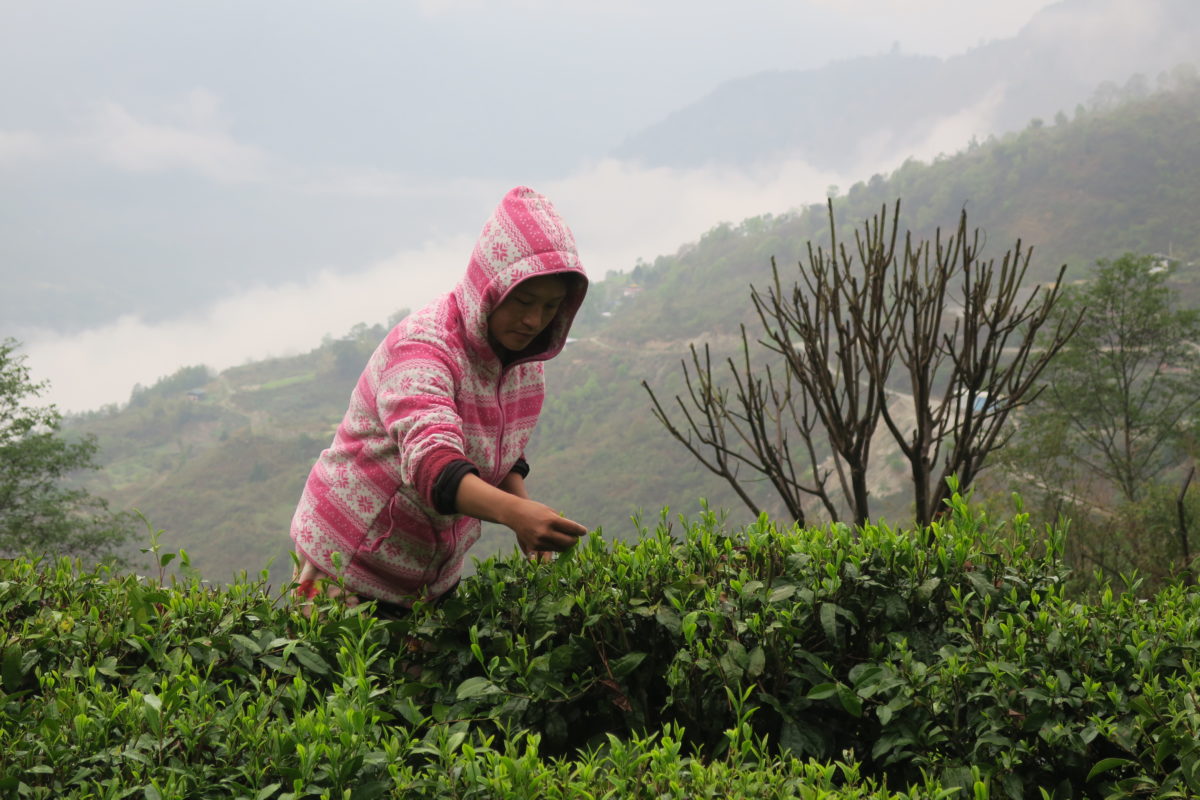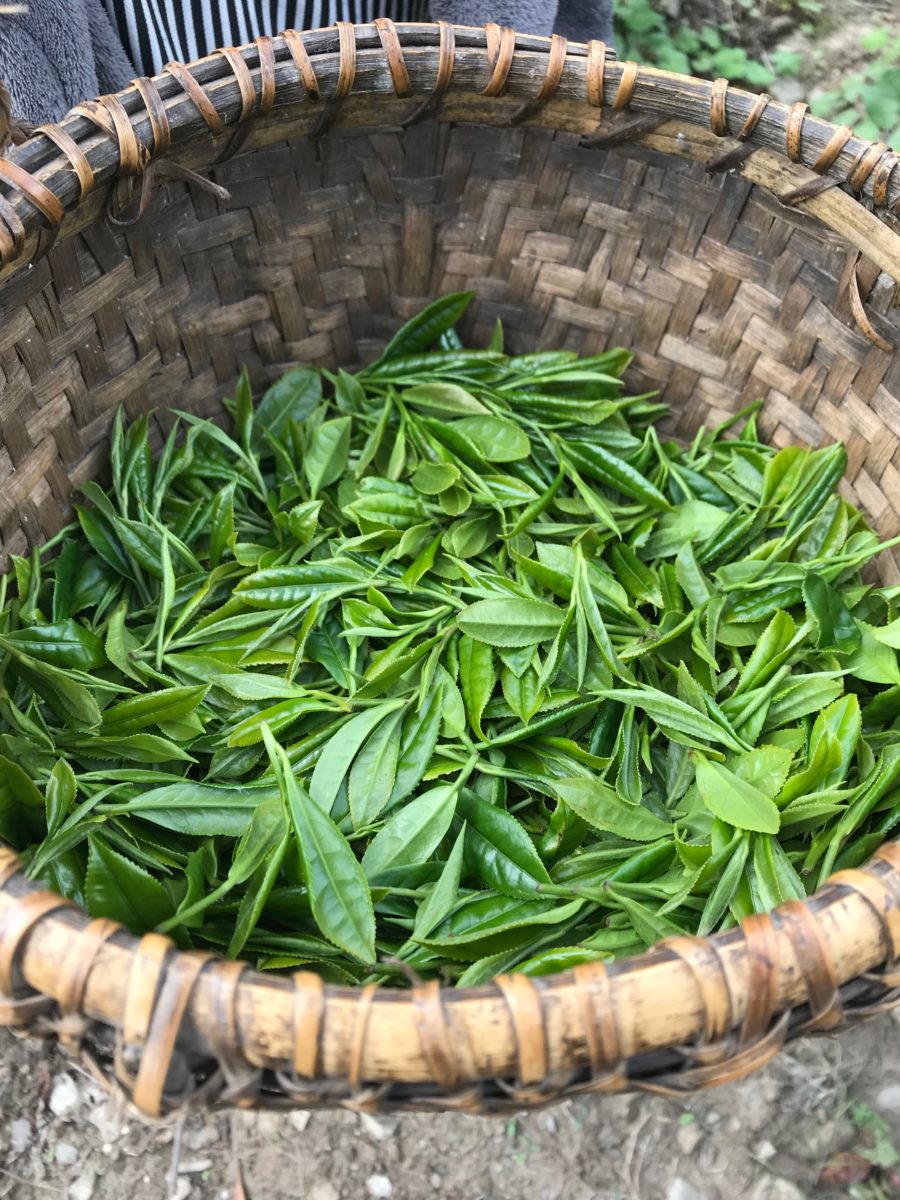
As a tea enthusiast, the arrival of a well-traveled package from some dark corner of the tea map is always a thrill. Especially when the box contains samples from deep forest, rebel growers, and/or a wild tribe. The opened box exudes a breath of humid, local air from the source.
A two-part series
- Part One: Harnessing the Inherent Charm and Potential of Farm and Forest Tea
- Part Two: Measures for Harnessing the Inherent Charm and Potential of Farm and Forest Tea
The precious samples are often badly packed and poorly sealed adding to the authenticity. As the water boils, I examine the leaves and my ethnobotanical juices are really getting going.
Instead of marching in as a critical buyer or technical consultant, I intend to savor the moment for pure pleasure, exploring the situation with an open mind.
We should never forget when tasting new tea to exercise reverence for the passion and determination it takes to harvest and convert any form of leaf into a finished tea. The hopes of recognition and future trade from these distant tea folk must also be treated with the utmost respect.

Depending on the particular scenario, many of these teas are produced for a local market where teas are bought at village prices in the direct vicinity of production, perhaps even sold alongside herbs and vegetables on market days. Increasingly I receive samples from new projects, new plants in new regions. It should be noted that at this stage, that though the leaf may not be at its experiential best, this is currently the true form of the product, a phase with a charm of its own.
If things work out for these producers we may one day look back at this as the ‘pre-mainstream days’. As a professional taster, it is fascinating to explore a new version of our favorite plant. Typically the nature of the primary leaf material is shrouded in clouds of poor or mediocre manufacture. Having tasted decades of badly made tea in my work I put faults aside to focus on the pure reaction of ‘leaf and place’ in the aromatic chemistry, exploring and examining the untapped potential in the raw material.

Sending samples to those of us in the geek and deep-enthusiast community is a precious exchange and one that I very much enjoy being a part of, both as the sending producer and as the receiving enthusiast. These circles are the small ranks of the converted, their reactions based on an almost religious conviction and the quest for the unknown (these are my people). The positive reaction from the blogger and taster community can create a certain amount of buzz, which is a great first step. But social media, with its tricky algorithms, connecting the like-minded, can sometimes give us the impression that ‘everyone is talking about it.’ But is this a good litmus test or gauge of true market potential?
With the current lust for obscure, origin-specific products, such tantalizing back-stories make for very seductive marketing. These unusual flavor-profiles would certainly appear ideal for any gastro-traveler. How I wish that we had a market with such a taste for adventure! But, as many of us know, the reality of retail is more complex than just finding tea and selling it. The drink our end-client is searching for is a choice they base on a more mysterious set of intangible, experiential criteria. Their selection from a large catalog tends toward less ‘challenge’ based choices than they may like to believe or we, the enthusiastic tea vendors, may dream of. For too many, the experience of these primal teas is simply too raw for the daily liquid companion most of them are looking for. Unless we can jump through a few hoops of practicality and market expectation, the small few adventurous souls ready to try these obscurities may well simply test a little sample bag. The all too finite ‘one-shot purchase’. This set-up does not lead to the viable, sustainable grower-to-shopper business proposition any of the players envision.
There are various reasons that many of these teas are simply not ready for the export market. Starting with the simple rules of stability. Basics such as acceptable levels of moisture content for travel and storage must be applied from the start. My first order must follow up, corresponding to the sample. To set up a clientele far away requires a product of consistent quality that the punters enjoy and then come back to without deception.

Seasonal and annual variations do have certain limits of acceptability, depending on the market we hope to enter but should be limited to subtle differences to relish and not poor grade disappointment. We are dealing with a fickle public that is spoilt for choice so if we get their attention once we must try to keep it. All-important, from the beginning, is that a focus on consistency creates a solid base for the fine tweaking of artisanal expression.
There is no doubt that in this golden age of tea quality, these new frontier teas are precious opportunities to increase the spectrum of possibility. With the right care everybody could win in a situation like this, the producers gain a new source of income and the flowering of that beautiful craft-pride from focused artisanal activity. The market gains a new tea thrill, connection with, and awareness of tea people in a new corner of the World. Ideally, we will be promoting a healthy, direct, and fair business model too. The potential is undoubtedly there.
As a buyer, I naturally covet such exotic offerings to spice up my catalog, stories that light up the imagination and flavor experiences that send my clients on a journey to a new place. It is certainly possible to produce a rustic leaf that adheres both to these time-honored, market-friendly aesthetics while retaining and enhancing the origin-specific differences of terroir. Raw to polished does not remove the beauty, done with care it will really showcase the unique spirit of this leaf.
The Pu’er ‘village’ aesthetic gives us a great example of the possibilities. The advantages of domestic interest and market density have created a spectrum of qualities in these rustic teas from the Yunnan that we all know and love. As a result, there are plenty of really well-made teas that find that elusive export market ‘connection’. The direct clientele of the Chinese market has encouraged such a high level of focus on diligence and quality through its appreciation of the subtle increments of quality. But let’s not forget that the fancy Pu’er leaves we lose ourselves to and impress our friends with are still a mere fraction of a percentage of the total regional production. The rest are either riding in the wake of their glory or produced as modest unnamed groceries. There are so many examples to inspire us at the level of leaf-craft of the older tea cultures of China, Taiwan, Japan, etc. We must listen if we hope to stand among them and approach the finely tuned economics that lead to their quality and end prices.

If we hope to increase our market outside the small group of pure, ‘off-road’ enthusiasts, we need a more systematic approach. Until we have the artisanal sensitivity to notice and control these subtle elements of technique vs. flavor profile, how can we hope to tap the potential of these new or wild leaves? We must aim towards being focused enough to identify, capture, and perfect the unique magic that exists only in these leaves. The intellectual excitement of rarity, obscurity, and authenticity only goes so far. It is the visceral flavor connection to the client that is going to lift a product from its local market. We must be getting to the end of the pot and wanting more, then getting to the end of the bag and needing to buy another.
The magic moment we pay for when we drink a fine Wuyi is not the story, it should never be, it is the experience. It is hard enough to sell fine tea and telling the story every time is work we don’t need should the tea in the pot not live up to the tale… you just can’t fake delicious.
—
“We have established that there is undoubtedly market place potential for new tea products from obscure terroirs. As in all industries are no magic recipes for a successful business and the intangible elements such as timing, connections, and lucky breaks will always be factors. So to have a fighting chance, how can we practically approach the complexities of cultivation and manufacture to be economically competitive. What practical measures can we apply to the product development and marketing of these new projects to a tea clientele that is fickle and spoilt for choice?” – Kevin Gascoyne.
Subscribe free to receive Part 2. Measures for Harnessing the Inherent Charm and Potential of Farm and Forest Tea
Tea Market
Get More Value from Your Tea: BRU Maker One
+41794574278
Jacque's Organics
(647) 804-7263
Interesting.
Always a pleasure to see where tea is ‘going’.
Unfortunately the world at large still considers that staid and unrecognizable cuppa as being tea! And folk such as we are treated as mavericks who don’t have their feet planted firmly on the ground.
Live with the hope that this too shall pass!
In the interim, we love what we are doing and will continue to do.
Fascinating Kevin. I taste, smell and see the passion and care you and your partners bring to your work everyday in my cup of tea!